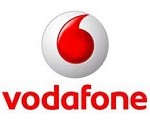SWOT Analyses

Standing for strengths, weaknesses, opportunities and threats, SWOT analysis represents a strategic analytical tool to be used for company analysis. Burrow (2008) stresses that SWOT analysis offers the advantages of identifying core capabilities and competencies associated with the business and developing suitable strategies and tactics. Strengths Oracle research and development capabilities can be highlighted as one of its main points of competitive edge. Specifically, the company successfully operates Oracle Labs where a wide range of projects that include Fortress, Maxine Research VM, QVM, Adaptive Optimization, Computer Architecture and Performance Modelling (CAP), Network Computing, Scalable Synchronisation, Electric VLSI Design System and many other projects have been developed that contribute to the competitive edge of the company (Oracle Lab, 2011, online). Other points of strengths include inorganic growth strategy that has enabled the company to achieve its current status and the robust market positioning of the brand. Moreover, the company has a strong and charismatic leader in the personality of Larry Ellison. Moreover, the takeover of Sun Microsystems by Oracle considerable enhanced the position of the company in the global marketplace and the same time as increasing the ranges of products and services offered by Oracle. Weaknesses One of the major weaknesses of Oracle relates to the heavy dependence of the company on the US and Europe marketplaces. Specifically, during the fiscal year of 2009-2010 Oracle operating revenue from US and European markets amounted to 64% of the total business revenues (Annual Report, 2009 – 2010). In other words, the lack of Oracle presence in Asian marketplace can be considered as the weakness of the company due to the fact that the role of Asian businesses are growing in the international business arena, at the same time when US and European countries are faced with serious financial issues. Moreover,…

The most important elements of SWOT analysis for M&S are presented on the following table: Strengths Financial maturity Human capital High level of customer loyalty Weaknesses Unfocused segmentation of clothing ranges Weak online presence High level of prices Opportunities Improving the offer of clothing ranges More focus on ‘ethical’ foods Focusing on customer segmentation Threats Conflicts between shareholders and executives Newly appointed top management not fitting in corporate culture Ineffective implementation of the proposed strategy

SWOT analysis is considered to be one of the most effective analytical tools used assess strengths, weaknesses, opportunities and threats associated with a business (Klein, 2007). The following table represents tushe summary of the SWOT analysis conducted for Sharp Corporation. Strengths: Diversified product portfolio Constant focus on research and development Strong brand Wide international market presence Weaknesses: Sluggish performance in key products such as PCs Heavy reliance on Japanese market Lack of scale of operations Opportunities: Increasing demand for technology Expansion into new emerging markets Growing mobile phones market in Asia Threats: Intense competition Availability of cheaper alternatives Growing environmental concern Strengths According to Johnson and Scholas (2006) diversification of product portfolio is important as it protects company against risk of exposure in any particular line of business. Therefore, Sharp is a relatively strong in this area as it has a diversified product portfolio. The company manufactures wide range of consumer electronics, home appliances, and audio-video and communication equipments. Moreover, by entering into electronic components market as manufacturer and supplier the company has balanced its consumer oriented business. Sharp has a strong international market presence as well as well-recognised brand. The company has more than 20 subsidiaries operating in over 25 countries across Europe, North America and Asia. The expansion of international market presence has allowed the company to reduce its reliance on Japanese market. In 2010, the revenue from international sales accounted for 39% of company’s total revenues (Datamonitor, 2010). Weaknesses Although Sharp’s international market presence has increased significantly in recent years, the fact that more than 60% of company’s sales account for Japanese market indicates that company is heavily dependant on Japanese market exposing its large proportion of operations to market risks in Japan. Compared to its competitors such as Sony and Toshiba,…

Vodafone SWOT Analysis.SWOT analysis is a technological tool through which strengths and weaknesses, as well as opportunities and threats of the business can be identified (Kotler et al, 2008). Strengths and weaknesses are considered to be internal factors affecting the company, whereas threats and opportunities are external factors. Vodafone’s leadership position in the market can be considered to be the main strength the company possesses, because due to this fact the company is better positioned to finance new projects and to introduce new services to the market. Moreover, Vodafone has a wide geographical reach and its network infrastructure is considered to be highly developed. The main weakness Vodafone has relates to its centralised management system that can cause inflexibility in today’s highly competitive marketplace. Pang (2009) informs that customer churn rate is the degree at which companies are able to retain their current customers. High level of customer churn rate is another weakness Vodafone has. However this issue is not unique to Vodafone and has negative effects to many subscriber-based service model companies. There are range of opportunities for Vodafone that if taken can improve its position in the marketplace. These opportunities include strengthening its position in new markets, forming strategic partnerships with technology and internet-related companies in order to increase the number of its services and the level of global presence of the company, and also focusing more in utilising 3G technologies. Threats to the profitability and long-term growth of the company are the level of global competition intensifying even more, market saturation in developed countries, as well as the emergence of alternative telecommunications technology. References Company Description, Vodafone Group Plc, Hoovers, Available at: http://www.hoovers.com/company/Vodafone_Group_Plc/cksxti-1.html Accessed February 12, 2011 Kotler, P, Armstrong, G, Wong, V & Saunders, J, 2008, Marketing Defined. Principles of marketing (5th ed.), Prentice Hall Pang,…
